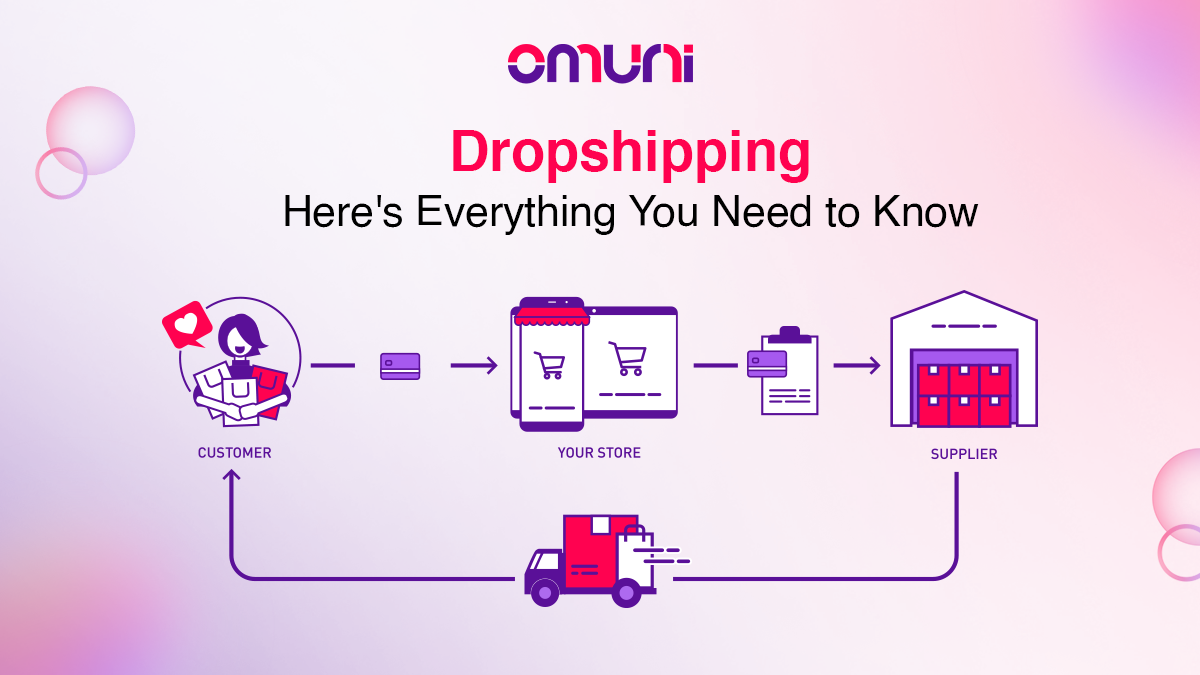Marketplace Business Model vs. Inventory-based Model
The unprecedented adoption of eCommerce has transformed the way we shop, bringing convenience and accessibility while opening up new opportunities for businesses.
eCommerce has greatly impacted the retail industry over the past few years. As per a Statista report, global eCommerce sales totalled around $5.2 Trillion in 2021. Projections indicate it will hit roughly $8.1 Trillion by 2026.
Two prevailing business models propelling eCommerce growth are the marketplace business and inventory-based models. Both of these norms offer distinct advantages and challenges for businesses, and understanding their differences is crucial for making informed decisions in the competitive world of online commerce.
Marketplace Business Model
The marketplace business model is at the forefront of the digital commerce revolution. The very concept of eCommerce began with this model. Industry giants like Amazon, Flipkart and eBay function around providing a platform where multiple third-party vendors can list their products. After products are listed, shoppers can explore these sites to compare and purchase products.
Advantages of the Marketplace Business Model

In this fast-moving world where what people want and how companies compete keeps changing, the marketplace business model offers convenience and flexibility.
The marketplace business model also helps you grow, lowers risks and makes getting started easier.
Diverse Product Range
The marketplace model offers an extensive selection of products from various sellers, ensuring customers an array of choices.
Lower Barrier to Entry
Entrepreneurs and startups can enter the market with comparatively lower initial investment, focusing on platform development and user acquisition.
Mitigated Inventory Risks
With the marketplace handling inventory, vendors are shielded from the risks associated with overstocking, dead stock and other concerns.
Scalability and Growth
Businesses operating within a marketplace can experience rapid expansion as they can leverage the platform’s broader reach.
Challenges Associated With the Marketplace Business Model
Like any other transformative concept, the marketplace model comes with its set of challenges that merit thoughtful consideration.
These challenges span a spectrum of intricacies, from maintaining consistent quality standards across various vendors to addressing the repercussions of heightened vendor competition.
As businesses navigate this innovative landscape, they encounter complexities that need careful management to ensure sustained growth and success.
Dependence on the Platform
One of the biggest challenges with the marketplace business model is that it requires dependency on the platform’s policies and algorithms, which can alter the rules of the game, impacting visibility and sales.
Intense Competition
One of the biggest challenges with the marketplace business model is the fierce competition among vendors, which can lead to price wars and reduced profit margins.
Quality Control
Maintaining consistent product quality and customer service across numerous vendors can be complex for any marketplace, impacting a retailer’s business.
Inventory-based Model
Contrasting the marketplace approach is the inventory-based model, a traditional yet impactful strategy. Industry-leading brands such as Zara and Apple follow this model, where businesses manage their entire supply chain from production to distribution, controlling the whole process.
While the marketplace model works well for startups and small businesses, established brands might lean towards the inventory-based approach for increased control and profitability.
Advantages of Inventory-based Model

The inventory-based model is a classic approach where businesses exercise complete control of making, stocking and delivering their products. This gives them a firm grip on quality and branding, securing consistent customer experiences.
Absolute Control
The inventory-based model allows businesses to exercise complete control over product quality, branding and the overall customer experience.
Brand Consistency
The approach ensures consistent branding and messaging, enhancing customer loyalty and recognition.
Higher Profit Margins
As there is no intermediary, businesses stand to reap higher profit margins per sale.
Streamlined Demand Forecasting
In an inventory-based model, you often have a better understanding of your inventory levels and product demands. This facilitates more accurate demand forecasting, allowing you to plan your production and stocking strategies accordingly.
Reliability of Product Availability
Businesses adopting the inventory-based model are better equipped to withstand sudden changes in supplier availability or marketplace policies.
Challenges Associated With the Inventory-based Business Model
The inventory-based model has its challenges. These challenges can impact operational efficiency and financial outcomes. Let’s explore some of the challenges that come with the inventory-based approach:
Capital Investment
The inventory-based model requires significant upfront investments in production, stocking and distribution.
Inventory Management
You must handle supply chain complexities, including procurement, storage and distribution, which can be operationally demanding.
Market Demand Uncertainties
Because you are not available on a popular marketplace, fewer people can see you, which might lead to lower sales at times. Predicting customer demand accurately can be challenging, potentially leading to imbalances in inventory levels and affecting profitability.
Choosing the Right Model for Your Business
eCommerce presents many opportunities, and your choice of business model can prove to be the driving force behind your success.
To make this important choice wisely, you should explore the details of both the marketplace and inventory-based models. By matching each model with your business type and goals, you can confidently decide on long-term success. Here’s a look at the decision matrix to find the best fit for various businesses.
| Aspect | Key Consideration | Marketplace Model | Inventory-based Model |
| Business Goals and Resources | For Whom | Startups and Entrepreneurs | Established Brands |
| Advantages | Entry point for startups with limited capital. Brands can focus on user acquisition. | Full control over the supply chain for maintaining identity and standards. | |
| Consideration | Rapid scalability aids startups in expanding offerings without inventory management burdens. | Established brands leverage customer bases and recognition for direct sales, enhancing profit margins. | |
| Product Range and Uniqueness | For Whom | Businesses with diverse product ranges | Niche businesses with specialised products |
| Advantages | Ideal for platforms with broad product selections. Consumers prefer diverse options. | Benefits niche businesses offering unique or specialised products. Preserves exclusivity and serves a loyal customer base. | |
| Consideration | Accommodating diverse products; challenges in maintaining consistent quality across offerings. | Niche businesses require investment in inventory and efficient stock management for specific customer needs. |
Conclusion
The eCommerce boom has reshaped shopping and business strategies. The marketplace model, led by giants like Flipkart and Amazon, offers convenience and scalability but comes with challenges like platform dependence and fierce competition.
On the other hand, the inventory-based model, used by brands like Apple, grants control over quality, branding and profits but demands more investment. The success lies in a strategic fit between the model, vision and other factors.
The marketplace model connects third-party vendors to customers on a platform, offering variety and convenience, but brands face competition and platform dependency.
The inventory-based model involves businesses managing their products entirely, ensuring quality and branding control, but requiring more significant investments and potentially higher profits.
Advantages of the marketplace model include a diverse product range, lower entry barriers, mitigated inventory risks, scalability and broader reach.
Flipkart is a prime example of a marketplace where multiple third-party sellers list their products for customers to compare and purchase.



